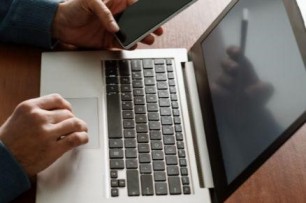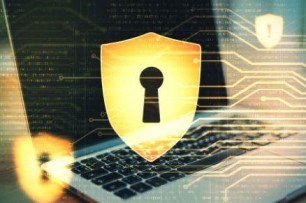General Insurance Blogs, Articles & Updates by - Magma HDI
Have us call you
- RENEW YOUR POLICY
- BUY NEW POLICY

Be adventure-ready and know these six tips before your next overlanding trip
Have you ever felt bored of your mundane daily routine and wanted a much-needed break? Overlanding helps you get away from all the stress of your work and refresh your mind and body, boosting the state of your mental health. It is a travel experience that focuses on a scenic destination away from the bustling city life. With this, you will get the chance to be closer to nature and give your body the rest it deserves.
Let's understand the tips that will make your overlanding trip memorable.
1. Plan well before you go:
You must decide on an adventurous overlanding route through the pleasant countryside and remote destinations. Do deep research about the destination, consider the weather predictions, and ensure favourable camping conditions. To avoid heavy traffic, accidents, or mishaps, you should know what particular amendments your car requires to suit the terrain.
2. Have basic survival skills:
Despite planning efficiently, mishaps occur, and you need to be prepared for any scenario. You might get minor scars or bruises while on the adventure, so carry a basic first aid kit to ensure you can treat minor wounds to avoid any infection. You might get stranded in an unfamiliar area, so it is always advisable to carry maps of surrounding regions in digital and physical forms. You should be capable of changing a tire in case of a flat tire. Adjust to the different weather conditions as your journey progresses.
3. Budget according to your needs:
Overlanding is a cost-effective travel experience. However, you might need to allocate your daily budget based on your needs. You can take inspiration from travel bloggers/vloggers and use similar tactics, or you can carry more resources to satisfy your needs. You should take into consideration your food, vehicle maintenance, and living expenses such as mobile connectivity. Save more by cooking food yourself and camping instead of staying in overpriced hotel rooms.
4. Comfortable dressing:
Wear clothes that are comfortable to be in for long durations. Pack appropriate attire for your activities and make sure it is compact. You can hand wash your clothes or use laundry rooms on your stops to clean and dry your clothes. It is also advisable to wear a roomy pair of good shoes that grip any terrain.
5. Carry essential equipment:
Carry equipment that protects you from excessive cold, wind, and rain, such as umbrellas, raincoats, jackets, gloves, and earmuffs. Emergency dry, nutritional snacks and bottled water should be a part of your travel inventory. Additional tools such as flashlights, fire extinguishers, and gas always make your trip must also be part of your travel checklist.
6. Take precautionary measures:
Safety is an aspect that you can never compromise with when planning an Overlanding trip, especially if you're travelling solo. During the journey, it's just your car and you who are for each other. So, keep spare wheels that fit your vehicle in case of a flat tyre. As roads are a package of undesired events, it is always advisable to get car insurance so that you return with good memories and no financial worries. Opt for online car insurance if you haven't bought one, hit that road less travelled and enjoy that overlanding adventure of a lifetime!
Overlanding journeys expose you to pure and unaltered experiences and introduce you to life in a way you might not have thought of. These trips also boost your self-growth as you learn to make arrangements to sustain yourself in any situation.
Click HERE to know more details about car insurance before you set on a trip.
Disclaimer: The information provided above is for illustrative purposes only. To get more details, please refer to policy wordings and prospectus before purchasing a policy.

Why is two-factor authentication important to assure additional safety
Two Factor Verification (2FA) is recognized by many names, such as two-step authentication, two-step verification, and even multi-factor authentication (MFA). In simple terms, to get access to an app, platform, or network, the end-users must ascertain their identities using two forms of IDs. One is their password, and the other factor can be anything, an OTP, biometric scan, a security question, etc.
2FA adds an extra degree of security by safeguarding user IDs and preventing cybercriminals from accessing online resources. Cyber attackers have to confront an additional barrier to access with 2FA in place. Even if hackers know a user's password, they must guess the second factor, which might be challenging based on the authentication factor allowed.
In today's post, we'll go over how this technology protects individuals and organisations from people with malicious intents out in this world headed for Metaverse.
1. Looking beyond passwords:
Generally, offices use single-factor authentication (username & password) to grant access to their services. However, these procedures are insufficient to protect users nowadays.
This is due to users often not adhering to best practices when setting a password. Although strong password rules may help companies reduce these habits, other offenses, such as writing down passwords, using the same passwords across various accounts, or discussing passwords with others, are common challenges at the workplace.
This is where 2FA comes in. It is tough to bypass a second authentication stage as it generally involves biometrics (which can't be faked), TOTPs (Time-bound and ever-changing), etc.
2. An efficient way to fight phish based attacks:
Phishing is a form of cyber assault in which people with malicious intentions send a bogus email that mines for sensitive data. It is one of the top web hazards confronting businesses today.
Phishing emails seem to be sent by respectable organisations and often invite people to log in to their social network, bank, or business accounts. Unfortunately, many consumers are duped by the nature of these emails and input their credentials, giving their passwords and access to sensitive information to hackers.
Let's say you have fallen for the phishing trap, and the hacker has your password. They will try to log in to your account and fail because the second layer of authentication will be waiting for them. One wrong attempt on the second stage will prompt you about a possible breach. You can immediately reset the passwords.
3. A single compromised account might be the tip of the iceberg:
If the same password or its variants are used for multiple accounts, the hacker may acquire access to all of them. Since a typical user handles over 80+ accounts on average, there's a potential risk the hacker will access other credentials. They may steal critical information from inside and even sell the hacked credentials.
If hackers manage to crack into your account and try to work their way to other accounts, they will not be able to get in.
In the future, companies plan to include Geolocation, device type, time of day to assist if a user should be authenticated or restricted. Furthermore, behavioural indicators can be discreetly tracked in real-time to enable continuous authentication. These are things for the future, though. Use the 2FA technology available to secure your online identity from hackers.
Another great weapon to add to your arsenal is public liability insurance. It covers you against identity theft, cyber extortion, unauthorised transactions, and numerous other cyber hazards. In today’s technologically equipped world, your life can be on a digital marketplace in just a few clicks, even ensuring system security is made easy online. Compare different public liability insurance prices and select a plan that matches your requirements without being too heavy on your pockets. Trust us; it is well worth it.
Consider checking the public liability insurance prices HERE.
Disclaimer: The information provided above is for illustrative purposes only. To get more details, please refer to policy wordings and prospectus before purchasing a policy.

Here are a few tips that you should know before you go for a two-wheeler test drive
Researching what type of bike to purchase and comparing its features is not enough; getting a test ride of your chosen model is equally important. It is a thumb rule not to buy a vehicle until you take a test ride. Test driving helps you to determine if the vehicle model is the right choice for you.
Getting reviews about a product is undoubtedly advantageous, but remember not to make up your final opinion solely based on that. Do not decide upon a model until you have tried the two-wheeler yourself.
Here are ten quick tips you should keep in mind while testing a two-wheeler that you are looking to buy:
1. A new bike will be in better condition than a test bike. Not all dealers make an effort to keep the test ride motorcycle in its excellent shape.
2. Make a mental note of where and what the controls are. Naturally, every bike has a different build and console. Therefore, before you hop on a vehicle, it is vital to know its layout. It is necessary to understand how the new bike will complement your daily commuting needs.
3. Pay attention to how the basic components impress you. That includes the comfort of its seat, clutch force, gear change efficiency, effortless braking, smooth acceleration, and overall performance.
4. Examine the effectiveness of brakes. But do not make a sudden emergency stop to do so. A modest stop or two will also give you a more precise idea of its capacity.
5. Instead of being influenced by the riders in advertisements, consider performance in the context of your daily travel. It is always a good idea to believe in your instincts and judgments rather than what others say.
6. The engine is the heart of any vehicle. It is crucial to verify engine performance thoroughly before making the final decision. Observe the bike's reaction to the throttle at a low speed in high gear and vice versa.
7. Don't forget to check its off-roading capability. Road conditions you cover regularly might not be as good as the ones near the showroom. Hence, ride through some unsophisticated paths to check for the sturdiness of the two-wheeler.
8. Look for ease of use as per your requirements. You cannot gain the confidence to handle a bike right away. Therefore, check to see if the bike's features respond to your expectations without any trouble.
9. Note down what doesn't please you. Then examine whether those things are changeable or replaceable.
10. Apart from examining the bike, ask these questions to your dealer; What does the warranty cover? What is the maintenance schedule for the motorcycle? What is the cost of essential services at the dealership? Is insurance covered, and what is the price of annual 2 wheeler insurance online?
Remember to be entirely sure about the bike before making a purchase. And If you're still indecisive, ask to take the two-wheeler for a second test ride or until you are confident. Once you've chosen to go from test riding to buying, be sure you have the right insurance coverage for riding your newly bought two-wheeler on the roads. Get Magma HDI's 2 wheeler insurance online with the additional benefits to give your two-wheeler lifelong protection.
Check out the best 2 wheeler insurance online HERE .
Disclaimer: The information provided above is for illustrative purposes only. To get more details, please refer to policy wordings and prospectus before purchasing a policy.

Try these seven tips to safeguard your devices from spammers and hackers
We utilise the internet in almost every aspect of our lives, looking for information, shopping, banking, online learning, playing games, and communicating with family and friends via social media. The data transferred over the internet could include banking and other financial records and medical information—all of which we desire to keep private. However, if the device is not protected, it may lead to malicious activities.
Hackers can access your most sensitive information with their vicious mindset. Consider purchasing a public liability insurance policy to protect the commercial business from various first and third-party liabilities. Here are seven suggestions to help you protect your office computers and other mobile devices from malicious intruders.
1. Antivirus:
Antivirus software protects your computer from malicious code or malware that could cause your operating system to malfunction. Get security solutions that support numerous technologies if your operating system didn't come pre-installed with it.
2. Use private Wi-Fi:
Avoid using public Wi-Fi on your device to prevent threat actors from gaining access to your device and downloading private files. Most public Wi-Fi hotspots don't encrypt data, so your connection to the Wi-Fi is visible to others. This poses a major threat to your device.
3. Complex password:
Obtaining a set of login and password combos from one source and trying those same combinations elsewhere is one of the easiest ways for hackers to get information. Therefore, the most important strategy to prevent network breaches is to use complex safe passwords.
4. Two-factor authentication:
Passwords are the first line of defense against cybercrime but adding a second layer of protection increases security. Many websites allow you to use two-factor authentication, which increases safety by asking you to verify your identity using at least two separate approaches.
5. Avoid spam mails:
Phishing attacks are when hackers send messages that appear to be authentic to deceive you into giving personal information. Always be wary of such emails from unknown senders, and never click on links or open attachments in them.
6. Substantiate app permission:
When you install an application, it will most likely ask for access to several of the device's most important features, including the camera, email, contact list, photo gallery, and location. If any of those features appear fishy, then disallow.
7. Be up-to-date:
Smartphone makers and app developers issue software updates regularly, which frequently contain security enhancements. So make sure your smartphone's software is up to date to avoid the risks of breaches.
You can protect your PCs and network from security breaches by using a combination of security technologies and best practices. The internet is a treasure trove of data and connections. If you use it with caution, you'll have a fantastic and safe time.
In today's dynamic business world, no matter how strong your corporate structure is, it is subject to a range of risks. As a result, it's a good idea to get public liability insurance policy to cover your needs and counter the damages caused by attacks due to vulnerabilities.
To look for the public liability insurance policy, click HERE!
Disclaimer: The information provided above is for illustrative purposes only. To get more details, please refer to policy wordings and prospectus before purchasing a policy.


